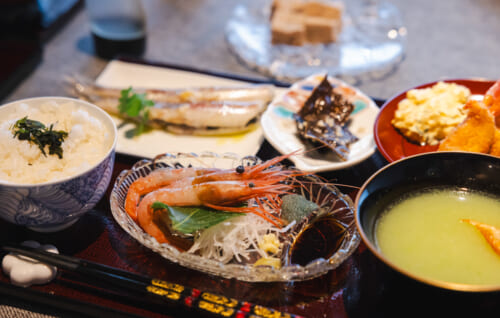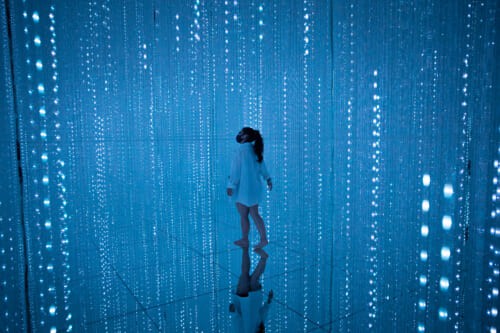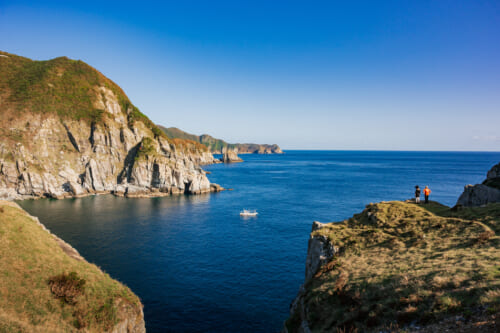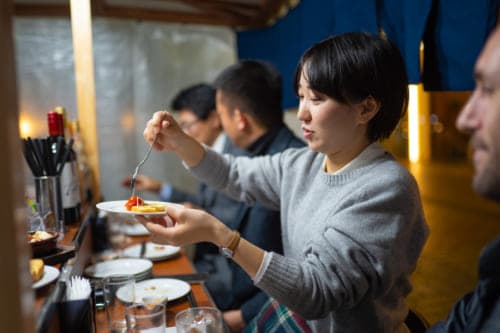On March 11th, 2011, the northeastern coast of Japan suffered the most unimaginable horrific disasters of modern history. A magnitude 9.0 earthquake triggered a powerful tsunami that inundated coastal towns with up to 6 meters of water. By estimates, nearly 20,000 people lost their lives on that day, and one might imagine that for residents of the area, it was the worst day of their lives. Yet, for some residents, the worst was still to come.
The powerful tsunami in turn damaged the Fukushima Daiichi Nuclear Power Station, causing several explosions that launched radioactive material into the atmosphere. The release of radioactive materials around the nuclear station abruptly forced thousands of residents from their homes. With no time to gather important belongings or valuables, these families lost everything and were relocated to “temporary housing,” which in truth, became some people’s homes for years. Others attempted to start fresh in other cities but were branded as undesirables based on misinformation about the radiation’s effects on those who lived around the heavily affected zones. The real poison in the air was this misinformation about Fukushima that somehow lingers nearly 12 years later, damaging the mental health and well-being of Fukushima residents who continue to suffer under unfair presumptions and ignorance about their situation.
Emerging from these ashes is Hope Tourism, a new brand of tourism designed to show visitors the revitalization process of Fukushima Prefecture along the coastline, and introducing visitors to Fukushima’s newly reconstructed regions and the restoration efforts being undertaken by locals.
Is Radiation Still a Danger in Fukushima?
For a brief period after the nuclear disaster, some people wondered if radiation exposure potentially posed an elevated risk of cancer to people living near the destroyed nuclear power stations. There was also a fear that hydrogen gas could be building up inside closed spaces and may cause another explosion that would scatter radioactive materials into areas around the station. Fortunately, that never occurred, and the risk was mitigated.
It is essential to understand that although Fukushima has been likened to other nuclear disasters like Chornobyl, the radioactive materials released in the Fukushima accident were magnitudes lower and less hazardous. Many lessons learned from the Chornobyl accident were taken into account in the procedures put in place after the Fukushima accident. The small amounts of materials that are still potentially harmful are being actively tracked and reported on publicly accessible websites.
In short, and radiation levels continue to decrease over time. Massive efforts to remove the topsoil of potentially contaminated areas have only sped up that process. In fact, decontamination efforts have reduced the airborne radiation in the prefecture, bringing it in line with major cities around the world.
The Great East Japan Earthquake and Nuclear Disaster Memorial Museum
On a broad plain just a few kilometers north of the now-defunct Fukushima Daiichi Nuclear Power Station, a recently constructed memorial museum serves to preserve the historical evidence of the earthquake and nuclear disaster for future generations. The stately concrete and glass building bravely faces the very sea that swept away houses and property that was once here, as if to symbolize a lack of fear in facing the future.
The Great East Japan Earthquake and Nuclear Disaster Memorial Museum‘s mission is to collect, preserve, and display evidence of Fukushima’s perseverance in the face of disaster. It follows the historical timeline recounting the construction of the nuclear power stations in Fukushima and the reasons the local population accepted them so willingly, the promise of a huge economic boost to the area and an assurance by TEPCO (Tokyo Electric Power Company) that the station posed little risk to the people. For decades, this was essentially the truth until March 11, 2011, when everything, including the truth about the safety of the station, was completely upended.
The events of the earthquake and tsunami and the critical days that followed are documented here in the museum in rich multimedia exhibits that are easy for the general visitor to follow.
Although much of the museum focuses on the period of the actual disaster, it also frames the catastrophe with a glimpse of the area’s modern history and the massive effort TEPCO, and government agencies have undertaken to rehabilitate the area so the local people can return to their former homes. With so much work done to clean up the affected area and rebuild lost communities, this part of Fukushima is indeed on the road to recovery.
The museum serves to show that in the face of one of the biggest challenges in Japan’s modern history, the people of Fukushima still hold on to hope for a bright future, in spite of, not because of, the nuclear power stations.
Remains of the Earthquake: Namie Town Ukedo Elementary School
A few kilometers up the coast from the museum, a different type of memorial has been preserved, the Ukedo Elementary School of Namie, Futaba’s neighboring town. Although the mood of the site is quite somber in its depiction of the power of the tsunami that submerged the entire first story of the school, the school is a celebration of the planning and quick decision-making of school officials and staff that saved the lives of everyone at the school when the earthquake struck.
Less than an hour and a half lapsed between the earthquake and the tsunami striking the Ukedo area, where the school stood just 300 meters from the ocean. The evacuation site on Mt. Ohira was over a kilometer away, about a 30-minute walk for elementary school students. Considering that the staff had to gather their wits, account for all of the children and get them moving, there was no margin of error in making a decision. Had the staff waited for confirmation from officials to execute their evacuation plan, they would not have made it to higher ground in time.
Fortunately, several smaller quakes, now recognized as pre-shocks to the major tremor leading up to the disaster prompted the staff to review and practice evacuation plans for the school before the actual disaster occurred. One of the schoolchildren regularly used the evacuation route on his way to baseball practice and led the group of teachers and students along the quickest path. By the time officials attempted to contact the school nearly an hour after the earthquake had struck to urge them to evacuate, the group had already reached the evacuation site. They eventually crossed to the other side of the mountain and were found by a cargo truck driver, who picked them up and drove them to the city office, safe and sound.
Meanwhile, the school and its surrounding community didn’t fare nearly as well. The 4 to 5-meter-high tsunami waters covered the school up to 10 centimeters of the second story. The fishing village of Ukedo, where most of the children lived, was washed completely away. The sheer power of the waters can be easily seen by the ruins of the classrooms and other common areas on the first floor of the school. On the second floor, encouraging messages written by first responders and others helping the area after the disaster remain on the blackboards 12 years later. There is also a three-dimensional map of Ukedo constructed by Kobe University students showing the locations of all the former buildings of the village and the names of the families who once lived there.
Despite the solemness of the school’s appearance, one cannot help but feel a certain peace that there was a happy ending, at least temporarily, for the staff and students of the school. But we must also remember that although their physical lives were saved, life as they knew it changed forever on that day and has yet to return to normal for many of them.
Reconstruction Cycling Road
While the Memorial Museum and Ukedo Elementary School Remains serve primarily as reminders of the damage inflicted upon Fukushima by the disaster, the Reconstruction Cycling Road does the opposite, demonstrating the resilience of the people of Fukushima in the post-disaster world.
The Iwaki Nanahama Kaido is a 53-kilometer stretch of cycling road connecting seven of Iwaki’s beaches along the coast of the Pacific Ocean. It was completed in March 2021 as an attraction for cyclists of all ages and abilities to enjoy the beautiful views of the Fukushima coastline.
Most riders bringing their own bicycles start at Aquamarine Fukushima in Iwaki City, with plenty of free public parking. Bicycles for rent along the road are available at the Shinmaiko Cycle Station, along with various rental shops around Iwaki City.
The sea breeze feels wonderful during the summer months, and the bright sunshine brings warmth on the chillier days of winter and early spring. The road is well-marked with bilingual signage in Japanese and English. There are numerous places to stop to rest and take photographs along the way.
While the views of the coastline are the highlight of the cycling road, stopping at the various facilities, cafes, and restaurants is a way for visitors to support the region’s economic recovery. As the area puts faith in the recovery process, small business owners are setting up shops and services catering to those riding along the cycling road, so be sure to take advantage of them as you ride.
Along the route, you will pass the Iwaki 3.11 Memorial and Revitalization Museum, another museum dedicated to the remembrance of the disaster focusing on Iwaki City.
There are several other cycling courses around the Iwaki City area, including rides along portions of the Recovery Cycling Road. You can download a PDF map in English from the Iwaki Tourism website.
Where Do We Go from Here?
We are at a curious point in human history when for the first time, people are beginning to debate whether or not tourism is a positive or negative activity for the global environment and society. While over-tourism has undoubtedly caused damage in certain parts of the world, there are many other places to visit, including Fukushima, where tourism can bring about positive change by helping to revitalize the local economy. For the people of Fukushima, the doors are wide open to visitors who are curious to rediscover the beauty of this part of Japan that has nearly disappeared for a decade and see for themselves that there is hope for a future here.
Sponsored by: Fukushima Prefectural Government










No Comments yet!